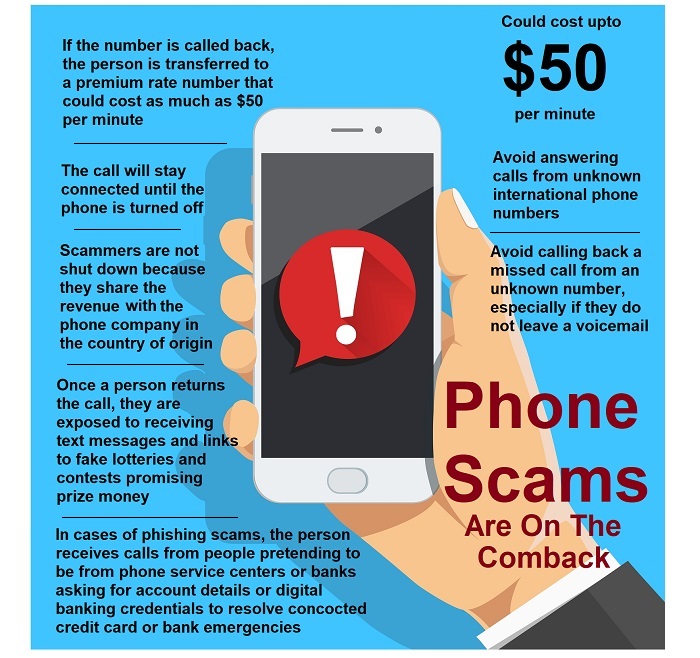Calling Back A Missed Call Can Cost $50 Per Minute
June 28, 2018
Phishing doesn’t only come by way of an email message anymore. Those days are long, long gone. There are many ways cybercriminals can dupe unsuspecting users now and using a phone is one of them that is becoming more popular as the number of cell phone users increases all over the world. Telephone operators everywhere are warning users of scams using the phone.
Called “vishing,” these scams are perpetrated when someone calls and tries to trick the call recipient into falling for something. In many cases, it’s the promise of free stuff. In other cases, it could be a pre-approved credit offer and perhaps the most notorious one is the tech support scam. In this one, someone calls pretending to know that you have a problem with your computer. How perceptive of them! They offer to help you fix it for a small fee. Unfortunately, many have fallen for this scam and given up payment card details to scammers.
A newer one, called Wangiri involves “missed calls.” A scammer will call from an anonymous (usually) international number. Some people will call that number back and when they do, they are rerouted to premium rate phone numbers. They get an automated message that keeps the caller connected until he or she shuts off the phone. These numbers rack up charges every second the phone is connected without the callers knowledge or permission.
Wangiri translates to something similar to “one ring and cut” in Japan. That is where this method was first used by cybercriminals. It uses one ring, then stops.

Some other reports have noted there were texts offering free prizes and contests where the victims can win money. If the number is called, a pre-recorded message comes on the line and just eats away money or credits on the phone.
These days, it’s nearly impossible to know if an “unknown” number is legitimate or not. The Federal Communications Commission (FCC) has done little, or as been allowed to do very little, to stop phone number spoofing and prevent “spam” callers from getting through. Only recently it allowed mobile service providers to block known spoofed numbers. Authorities have discussed doing something about this, but because of technological constraints, cost, and politics, stopping this behavior is next to impossible at this time. However, to the credit of the FCC, in May of 2018, it issued its largest fine ever; $120 million, which closed out its investigation into a massive neighbor spoofing telemarketing operation.
The Do Not Call list has been available for several years. However, because of the uptick in spoofing and the ease of doing it, it’s nearly impossible to prevent fake callers from getting through to you.
Until something is done, resist the temptation to pick up calls or return calls to unknown numbers. More often than not, it’s a scammer. If it’s important that the caller reach you, he or she will leave a message or contact you in another way. If you do pick up, don’t provide any confidential information to the caller. In fact, don’t say a word. Just hang up the phone.
Stickely on Security
June 26, 2018

